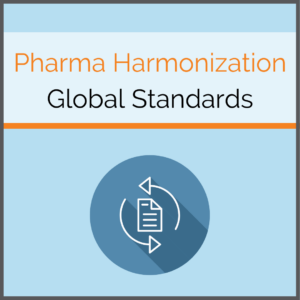
Globalization and national efforts to make medicines safer and exclude counterfeits from the legal supply chain present significant challenges for pharmaceutical manufacturers. They must comply with numerous different pharmaceutical regulations depending on how many markets they supply their products to. To counteract this, there are global efforts to standardize regulations and standards in the pharmaceutical industry. Harmonizing pharmaceutical regulations can contribute to drug safety and avoid issues such as supply shortages and increased costs.
Various stakeholders worldwide are working on harmonizing pharmaceutical regulations. Harmonization can reduce duplicate work, increased costs for clinical trials, and delays in drug approvals. This leads to faster and more cost-effective processes, ultimately benefiting patients.
Organizations advocating for harmonization
The World Health Organization (WHO) is among those advocating for the harmonization of regulatory processes and standards in healthcare. Its goal of harmonization is to standardize these processes between different countries and regions, improving efficiency and facilitating access to safe and effective medicines. The WHO collaborates with various regulatory networks to promote the harmonization of pharmaceutical regulations. These networks consist of national and international regulatory authorities that develop and implement common standards and guidelines. The WHO also supports initiatives and projects aimed at harmonization, including training, workshops, and technical assistance for regulatory authorities.
The International Council for Harmonisation of Technical Requirements for Pharmaceuticals for Human Use (ICH) also plays a crucial role in the harmonization of international pharmaceutical regulations. Since 1990, they have been working to ensure the safety and accessibility of medicines worldwide amid increasing globalization. They promote international cooperation and the exchange of diverse stakeholders and issue important guidelines for safety, quality, and efficiency.
Benefits of harmonization
Global harmonization efforts have numerous benefits for both the pharmaceutical industry and patients. For example, drug approvals can be made more efficient. Harmonization leads to less duplication of work and faster approval processes, reducing costs and time to market for new products. Harmonization also promotes collaboration between international regulatory authorities. The aim is to lead to better monitoring and safety of medicines, which can help mitigate supply shortages. Additionally, pharmaceutical companies benefit from clearer and more uniform guidelines, making the planning and execution of drug approvals and market launches easier.
Challenges in international harmonization of pharmaceutical regulations
Despite the numerous benefits, there are some hurdles that make harmonization on a global level challenging. These include cultural and ethical differences in individual countries or regions, leading to differing expectations regarding the requirements and goals of regulations. Additionally, some countries lack the resources and expertise to adapt to international standards. Technological infrastructure also plays a crucial role, with significant regional differences. For example, the availability of the Internet in rural areas influenced the design of Russian pharmaceutical regulations, where a crypto-code was introduced to provide a means of verification without reliable Internet access.
Current developments
In 2023, the European Commission introduced a comprehensive pharmaceutical package aimed at improving the supply of medicines in the EU and strengthening the EU’s autonomy in this area. These reforms aim to make regulation more agile and flexible, which would also indirectly contribute to harmonization. Through the EU-FMD, the EU is on a good path toward harmonization, as many countries already operate under the same standards.
GS1 has developed a “Healthcare Strategy” that they intend to work on intensively between 2023 and 2027. They focus on seven areas: providing standards, packaging identification, interoperability in implementation, emerging technologies, one-barcode solutions, international stakeholders, and solution partners. GS1 aims to achieve harmonized implementation of global standards in business and clinical processes. Success in this regard would benefit patients by improving interoperability, quality, and efficiency in healthcare.
Technological progress generally increases the possibilities for harmonization. Advancing digitalization and the increasing use of artificial intelligence simplify international cooperation.